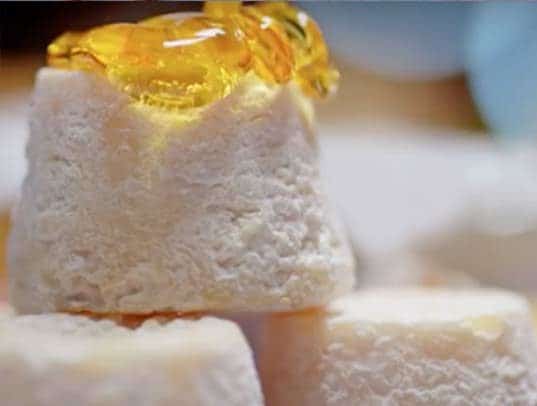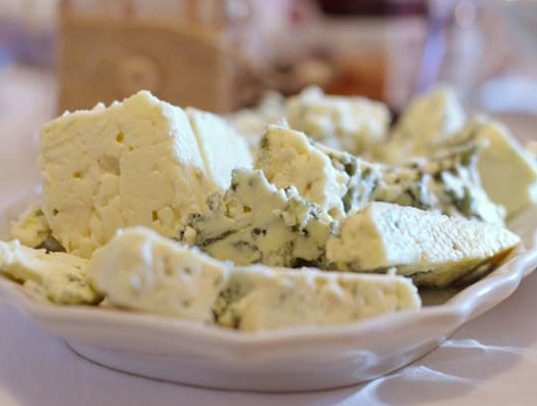Your Handy Guide to Cheese
Be a cheese expert! Check out our handy guide to different cheese types and find out how professionals often categorise them by rind and texture.
1. Soft Cheeses
Fresh white cheeses (no rind)
Too young to have developed a rind, these cheeses tend to be wet and mousse-like, or, if they’ve been preserved in oil or salt they become firm and crumbly. They often have a slightly sharp, sour milky (lactic) taste, and are often used in salad or baking. Some, like Cerney Ash, Rosary Goat or Rove des Garrigues make attractive, lighter additions to a cheese board and are readily available in supermarkets in the UK.
Typical examples: Cream cheese, Goat’s cheese, Mozzarella, Feta, Fromage Frais, Boursin
Aged fresh cheeses (with a wrinkly rind and bluey-grey moulds)
These cheeses are typically seen on market stalls all over France in a multitude of shapes from logs to pyramids. They’ve developed a thin, almost transparent rind that wrinkles and shrinks as the cheese ages. Gradually the wrinkles become crevasses dusted with blue, grey and white moulds, and the flavour changes from nutty to intensely piquant and goat. Their small size and unusual shapes make them attractive additions to any cheese board, although they’re not for the faint-hearted and can be quite difficult to source in the UK – you may need to go to a specialist cheese supplier for these.
Typical examples: St Maurre®, Banon® , Chabichou®, Valencay®, Crottin de Chavignol ® , Dorstone Goats®, Little Flea®
Soft white (with a white crusty rind)
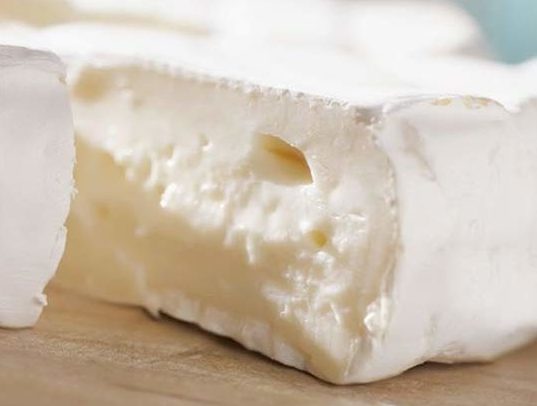
The white crusty rind with its mushroom aroma and taste prevents the smooth interior from racing across your crusty bread. Mild, sweet and buttery, they can develop a robust savoury aroma with an almost meaty savoury tang; the strongest of these is a perfectly ripe Brie de Meaux.
Typical Examples: Camembert de Normandy, Brie de Meaux, Vignotte, Capricorn Goat, Tunworth.
2. Semi-Soft Cheeses
From barely firmed to leathery rinds covered in grey moulds to bright orange
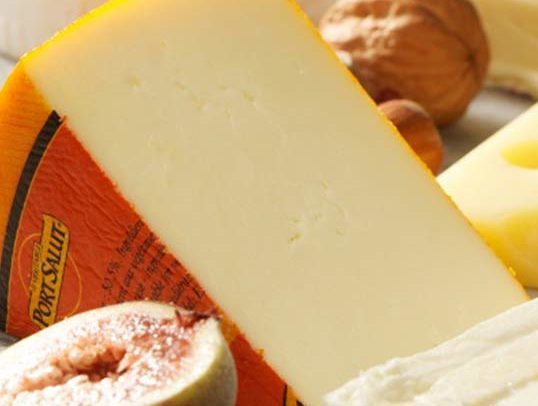
Those like Port Salut have thin, barely formed rinds are generally mild and rich. The interior of those with thicker rinds is more supple, elastic almost volatile and the taste is earthy with just a hint of meadow flowers, becoming more savoury and intense.
Typical Examples: St Nectaire, Reblochon, Raclette, Port Salut wedge
3. Hard Cheeses
Fine and leathery to thick, smooth rind
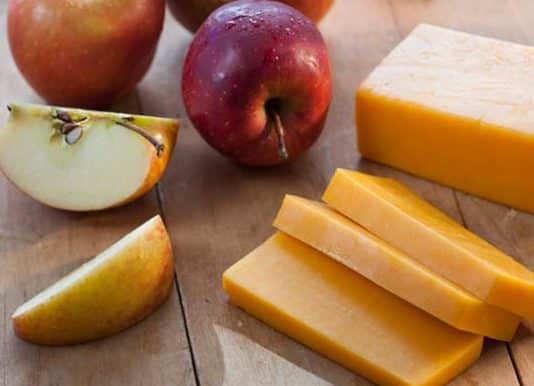
Typically aged for 2 – 24 months they range from flaky young Caerphilly, to crumbly Cheshire or dense almost chewy style Cheddar, while their flavour can be sweet and nutty to intensely savoury like raw onions. Many British classics are made in block form and matured in special plastic and consequently they do not develop a rind. Like all types of cheeses, they can be made with cow, goat, ewe or even buffalo milk which will affect the flavour and texture as does the breed of animal and the season the cheese is made.
Typical Examples: Cheddar, Lancashire, Beaufort®, Parmesan, Lincolnshire Poacher, Swaledale®, Brinkburn®
Watch out: It’s worth pointing out that whilst most cheeses are suitable for vegetarians, genuine Parmesan isn’t because it is typically made with animal rennet. Check the label if it’s a concern.
4. Blue Cheeses
Gritty, rough sometimes sticky with grey-blue moulds
Blue cheeses offer an excellent contrast to the other types and provide an excuse to enjoy a drop of dessert wine. Those with a soft white Brie type rind are mild, creamy, slightly earthy and ideal for beginners; those with sticky, mouldy rinds are sharper, spicy and intense. Those who like Stilton will go for a thick, dry crusty rind, pungent aroma and a lovely buttery texture. Most blues are aggressive and sharp when young becoming mellow and spicy with age. The blue is a penicillin mould that is added to the milk and goes blue when exposed to air by piercing the cheese with metal rods. The blue then grows along the tunnel, cracks and trails between the roughly packed curds.
Typical Examples: Shropshire Blue, Roquefort, Gorgonzola, Barkham Blue®, Cornish Blue®, Strathdon Blue®
5. Flavour Added Cheese
Barely formed rind
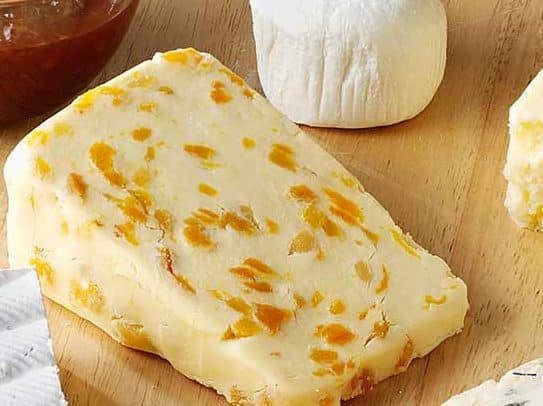
These are hard cheeses with ingredients added to the curd or rubbed into the rind like nuts, fruit, spices, herbs, nettles and include smoked cheeses. Those made by breaking up young cheese, combining them with various sweet or savoury ingredients then re-forming them are called Blended Cheese. They are particularly good for persuading non-cheese lovers of the virtue of cheese and certainly belong on a cheese lovers’ board.
Typical Examples: White Stilton with Apricots, Wensleydale with Cranberries, Cornish Yarg, Smoked Cheddar
Check out our great cheese board suggestions to put your new-found knowledge into action! In a hurry… go directly to our French cheese board, informal cheese board or Festive cheese board suggestions now.
